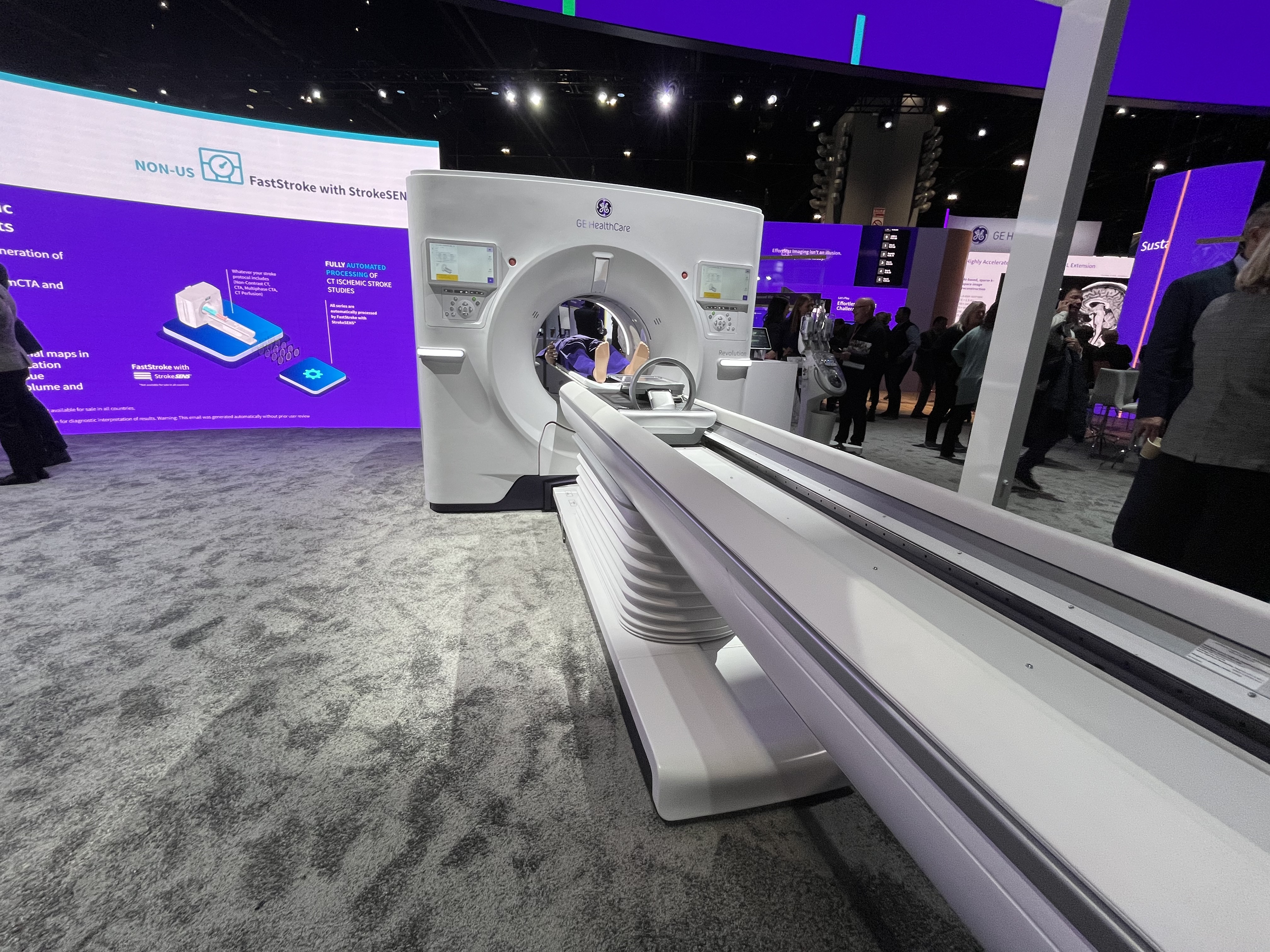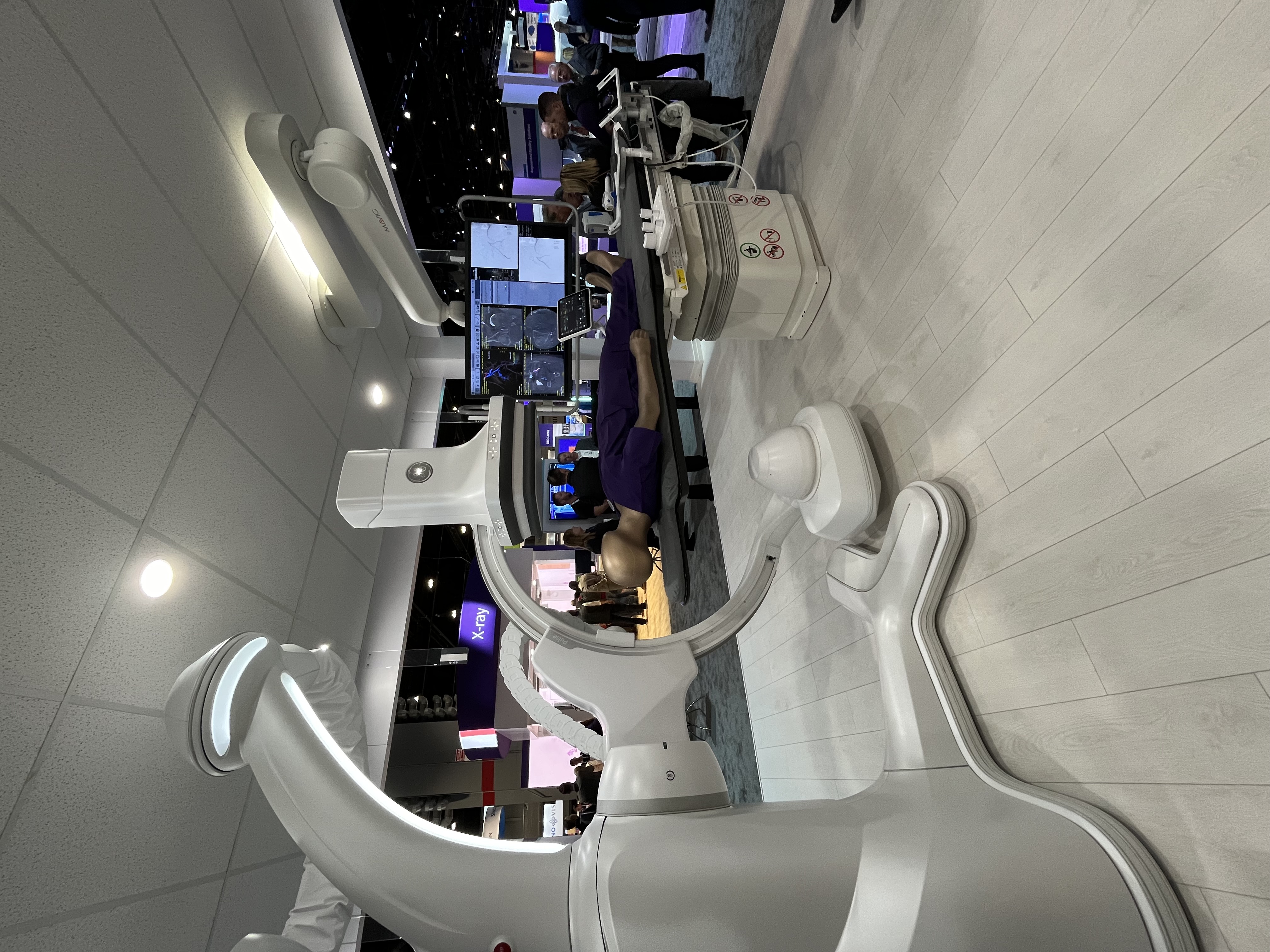Seconds and minutes count on the front lines of patient care, and not only when it comes to lifesaving emergency and surgical procedures. Clinicians and technicians are under increasing pressure to do more, faster, every day as the number of patients seeking — and benefiting from — advanced imaging and image-guided therapies continues to grow. Couple that with issues like workplace burnout and a shortage of technologists and other healthcare professionals and the significance of efficiency in care delivery becomes increasingly evident. In the face of these challenges, the potential of artificial intelligence driven technologies and digitization emerges as a pivotal solution and area for needed innovation to support healthcare professionals in confronting these complexities.
“The need for efficiency is real, and the potential for AI to improve the radiology workflow is immense,” explains Jan Makela, president and CEO of imaging at GE HealthCare. “We want to help radiologists meet their goals for improving quality of care. To do that, we are incorporating AI and deep learning to develop easier processes and reduce some of the complexities in imaging, which will result in improved efficiency and a streamlined workflow.”
Intelligent efficiency features are now incorporated all across GE HealthCare’s line of imaging technologies.
Making the First Image Count
In emergency rooms, urgent care centers, and hospitals where state-of-the-art bedside diagnostic capabilities are critical, GE HealthCare’s AMX Navigate mobile X-ray system has been enhancing patient care since 2021. The rugged, easy-to-maneuver device produces fast, high-quality images and boosts workflow efficiency with several digitized applications.
A technologist simply scans a barcode that links to the patient record, for example, and the AMX Navigate can automatically suggest and, with approval from a technician, set up the appropriate X-ray protocol. The system becomes even more powerful with two AI-based applications — Quality Care Suite 2.0 and the latest Critical Care Suite 2.1 — that can be added on and embedded directly into the device to provide critical insights available at the point of care and across the entire clinical care team. The latest Critical Care Suite 2.1 (CCS 2.1), enabled with Quality Care Suite (QCS), includes a collection of AI algorithms designed to notify technologists and radiologists of potential image quality issues and suspicious findings, as well as provide automated measurements at the bedside and in PACS without disrupting clinical workflow.
More CT Scans, Stat? No Problem.
Each year more than 80 million CT scans are performed in the United States alone, and demand for the technology is only rising — which benefits patients but means more work for already slammed radiology teams. GE HealthCare’s Revolution Ascend platform offers top-of-the-line CT imaging with built-in scalability to grow and meet healthcare system needs today and tomorrow, as well as a range of AI features — the appropriately named Effortless Workflow — that simplify setup and logistics for everyone involved.
Effortless Workflow is designed to eliminate many of the most time-consuming tasks technicians typically perform before and after the actual scanning process. The solution suggests relevant protocols based on information it reads from a unique patient barcode and then, with one click by the technologist, uses real-time depth-sensing technology to adjust table elevation and move the cradle into optimal position. The machine generates a 3D model of the patient’s body, then runs a deep learning algorithm to automatically adjust positioning so alignment can be optimized for whatever type of imaging is needed.
Altogether, Effortless Workflow enables technologists to personalize scans quickly and accurately for each patient with significantly less effort. The result is exceptional, high quality CT images acquired in less time: 56% reduction in positioning time; 66% reduction in total exam clicks; and 21% reduction in total exam time*.
“Acting much like an in-room command center, these technologies enable the technologist to finish all exam setup and positioning work without having to leave the patient's side,” says Makela. “Imagine the potential impact of this highly efficient process, with respect to the goal of reducing burnout for the practitioner while optimizing the patient experience.”
Efficiency Meets Ergonomics in the IGS Suite
The precision made possible by image-guided therapeutic tools is transforming the practice of minimally invasive procedures. Yet among the many interventional radiologists and cardiologists GE HealthCare consulted while developing its latest platform for image-guided surgeries, nearly 50% characterized their access to image-guided displays and function panels during procedures as “poor.” That’s a critical issue in terms of efficiency, clinician stress, and patient care, so the company designed its Allia IGS platform — an all-in-one patient table and imaging device for use in image-guided therapies and procedures — with a focus on ergonomics and workflow efficiency.
Surgical and interventional suites are typically shared by multiple physicians, each with their own needs and preferences. Allia allows clinicians to enter the workspace and immediately customize the setup and control dashboard with the touch of a button. The Allia platform offers a trusted assistant for image-guided therapies so that the focus can remain where it belongs: on the patient.
“Interventionalists and surgeons face multiple challenges in performing new and complex procedures,” explains Makela. “They require diverse patient access, flexible working positions, and the use of advanced image-based guidance tools. Our goal is to provide them with intelligent and efficient solutions that allow them to focus on the patient and on the procedure.”
Learn more about the role high-efficiency technologies play in GE HealthCare’s products.
*The data was based on comparison between GE HealthCare’s legacy products (16 ch and 64 ch scanner) and Revolution Ascend in the three institutions using a pilot product and selected routine head and body. The data set of this comparison was 838 exams for legacy products and 1387 exams for Revolution Ascend. The time saving value may not be observed for all institutions depending on the clinical practice. The positioning time as defined from the scan setting time is from “Open new patient” to “Confirm setting for Scout”.
The required clicks are defined as clicks required to execute a scan from selecting a new patient till start scan. All associated clicks for and in clinical practice, number of the required clicks may vary depending on the circumstances, including but not limited to, the clinical task, exam type, clinical practice, and image reconstruction technique.
The time saving value of total exam time may not be observed for all institutions depending on the clinical practice. Definition of entire exam time is from “Open new patient” to “Last primary recon completed” for Revolution Ascend and “Close exam” for legacy products.



